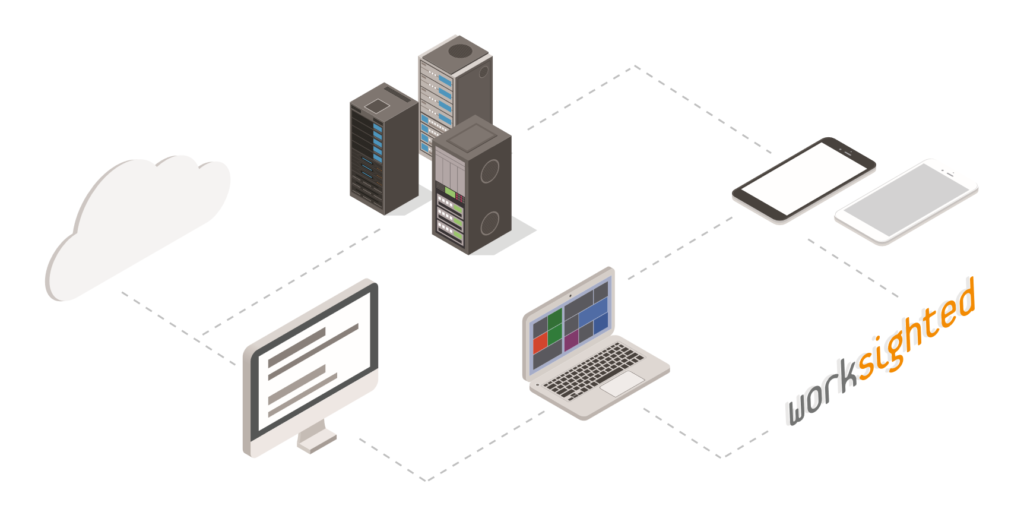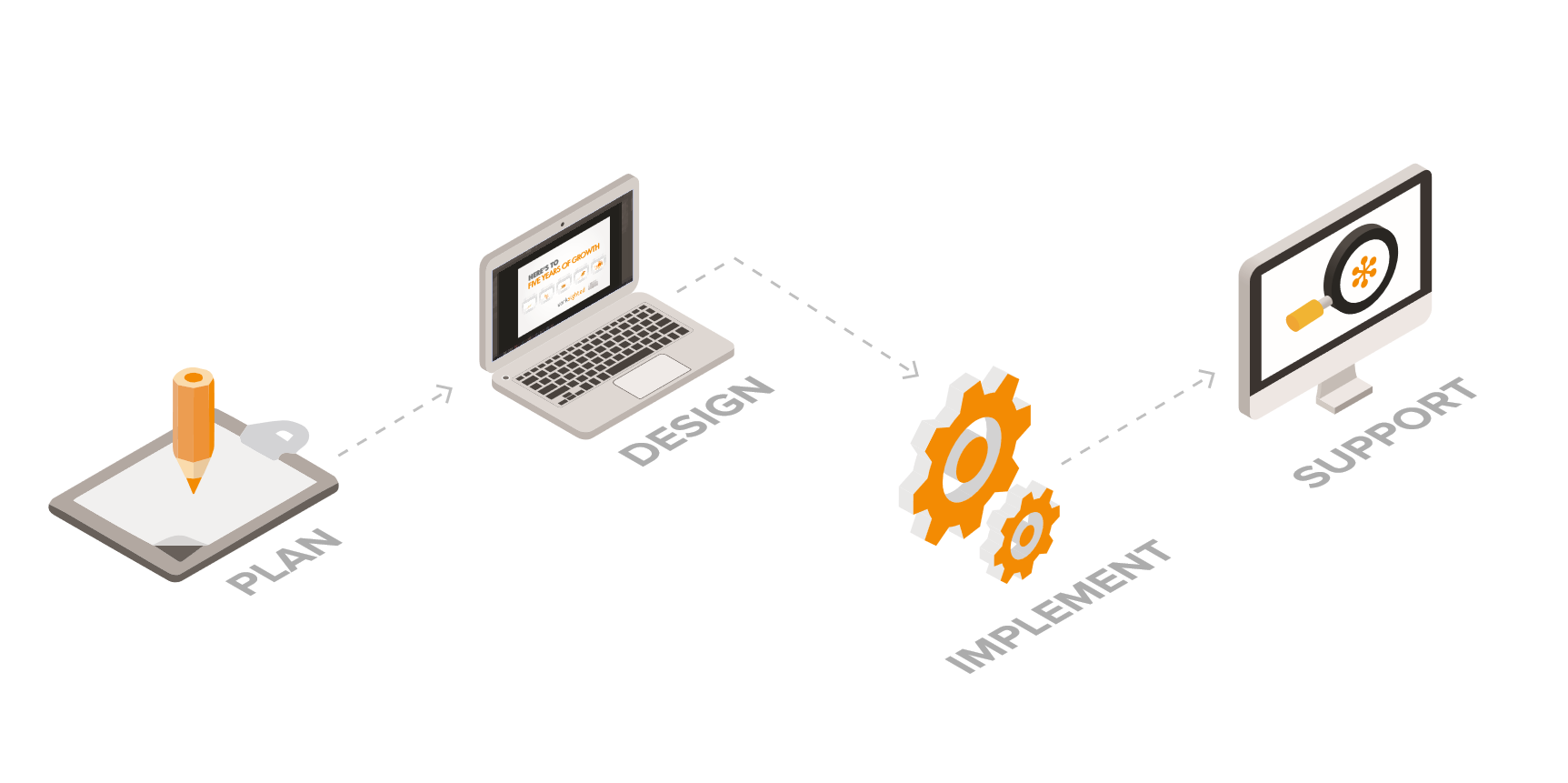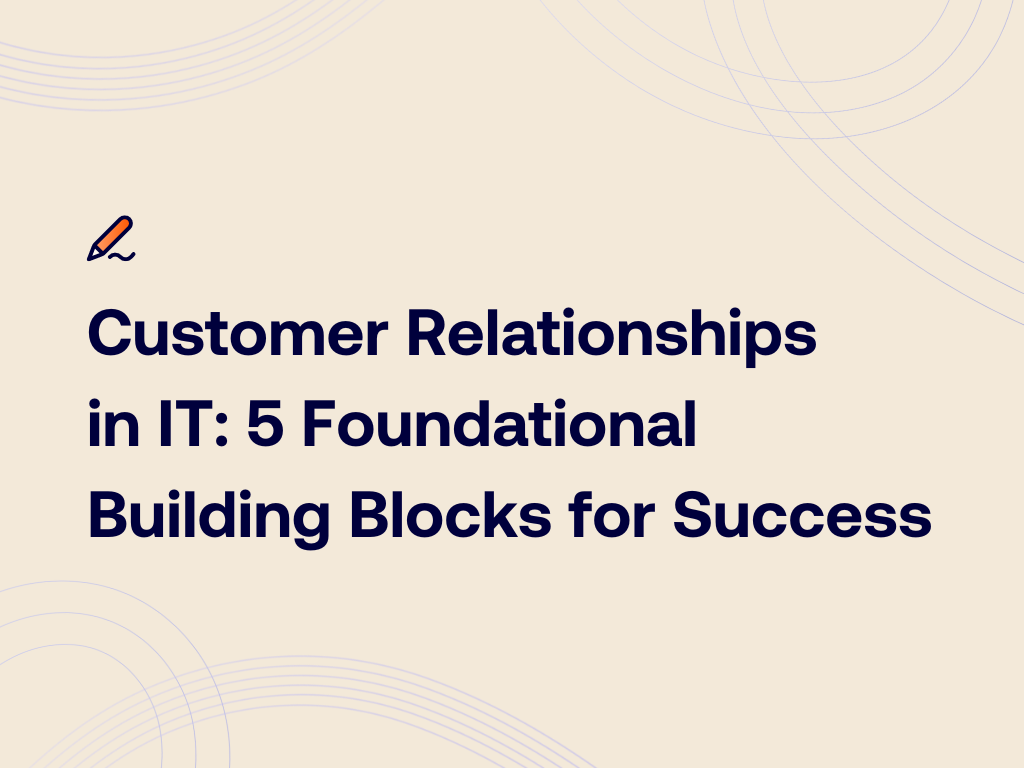Step by Step: Build Your Digital Transformation Roadmap
Companies everywhere are racing to digitally transform. But for it to be successful, you need to plan the process carefully. In this blog, we discuss the four steps to building an effective and resilient digital transformation roadmap. But first, let’s examine what digital transformation means.
What is Digital Transformation?
Digital transformation is the use of technology to update, improve or replace your current businesses processes.
This could include implementing a new company intranet, adopting Microsoft Teams, or developing and introducing a new enterprise application. Whatever new steps your organization takes to better harness new technology – that’s all part of digital transformation.
Now that’s established, we’ll explore the four key steps to creating a digital transformation roadmap that will keep you on the path to success.
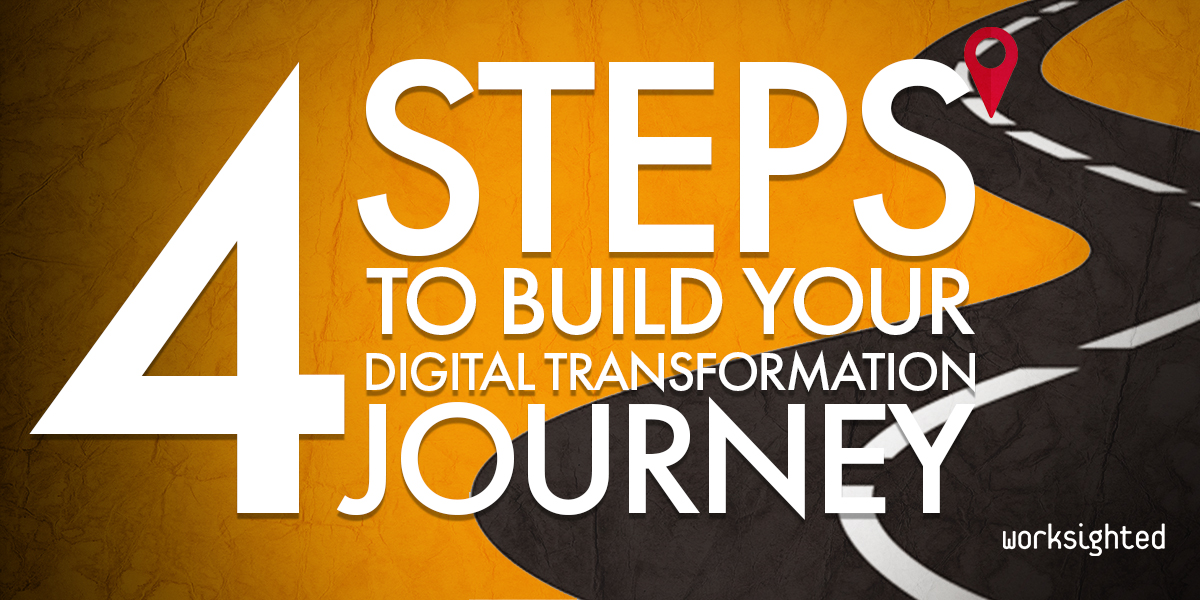
1. Identify Your Priority
Digital transformation isn’t a means to an end. If you’re thinking “we need to do a digital transformation”, without really understanding what processes or systems need transforming, and why, there’s a good chance you’re putting the solution before the problem. A successful digital transformation process should start with a clear and focused understanding of what the problem you’re facing is, and how the right technology can provide the solution.
What a problem could look like
For Microsoft Teams, the problem could be “we need to improve the way people collaborate”, or “we need a more effective alternative to Outlook.” The key to effective digital transformation is to first understand your problem, and then diagnose a solution.
2. Understand Your Resource
Some companies will have the expertise, experience, and resource in-house to plan, execute and manage a digital transformation strategy from end to end. Others will need outside assistance for one or all of these stages. Some might require a consulting partner to help design the transition but are happy letting their internal team take the reins from there. It’s important to get the right model for you before you start. This requires a good understanding of what resources and skills you already have.
A step you can take today
Take a good look over your business and consider where the gaps are. Then, consider what outside help you’re going to need and how they’ll work with your internal team. And if you’re finding that you’re not sure where to start, then consider finding a consulting partner to help you with this. It’s much better to get help at the start of the process then find you have to start from scratch after a digital transformation project has gone wrong.
3. Build Your Timelines
Once you have a good idea of who is working on the project, the next step is to start building your roadmap and planning the timelines. This should require a phased approach, and it’s important to make sure there’s enough room in the timelines for flexibility. Unless the project has a hard deadline, overly tight timings are likely to do more harm than good.
What your roadmap might contain
Here’s a look at what some of the stages of your roadmap might include:
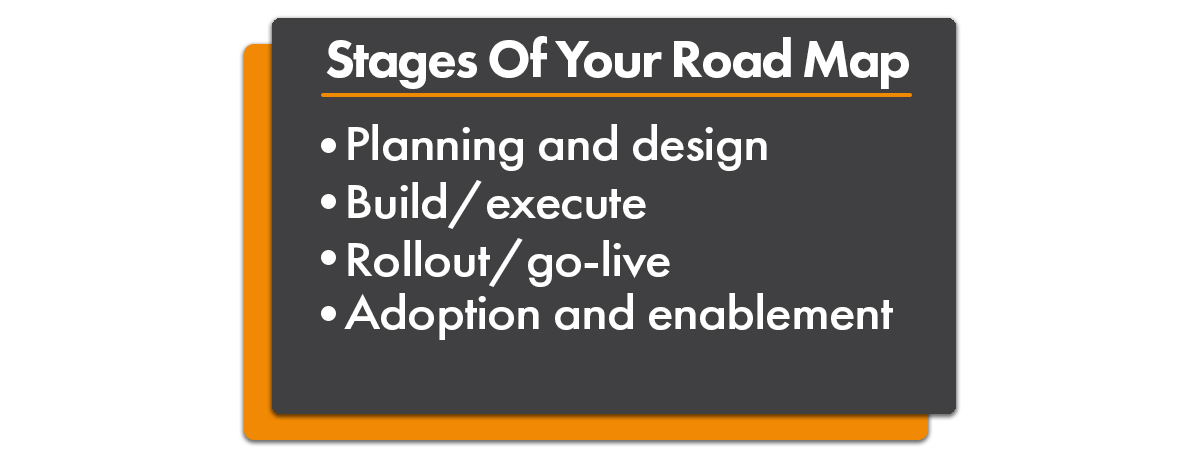
- Planning and design
- Build/execute
- Rollout/go-live
- Adoption and enablement
The different stages of this timeline are likely to overlap—and it’s not always as simple as moving from one stage directly to the other. Adoption, for instance, should really start long before the project is due to go live. So, when planning your timeline, be conscious of the resources you have and the order they should come in. If in doubt, seek advice from a partner with experience planning digital transformation strategies—they should be able to identify where the potential gaps and roadblocks are.
4. Don’t Forget About Adoption
Adoption is one of the most important parts of a digital transformation journey, but unfortunately, it’s also the one organizations neglect. The most advanced workplace technology in the world will be next to useless if your internal team lacks the knowledge or appetite to start using it effectively. That’s where an adoption strategy comes in. It’s important to start educating and training your team on the changes that are occurring long before the new technology is rolled out.
Adoption strategy in brief
There are many forms change management can take, including training sessions, videos, or infographics. It could be as simple as putting the information in an email newsletter, an ongoing internal comms campaign or a training program. The key is to keep reminding people that change is coming, explain the reasons why and how the new technology or processes will make their lives easier. It may be helpful to adopt a team of ‘change champions’ around the organization who can teach and encourage their colleagues around them about the new technology. Building enthusiasm is often half the battle and change champions can play an important role in enabling this.
Transform with the Help of Worksighted
Building a digital transformation roadmap isn’t always easy but it is a vital part of achieving long term success. The key to getting it right is to think carefully about what resources you have and to take the time you need to put in place the right steps.
Some companies can manage a digital transformation process internally, but most will need help in some form or another. If you don’t know where to start with your digital transformation, and you need some help from the experts, our specialist consultants are on hand to give you the guidance to make sure your change is a success.
If you want to find out more about building your digital transformation roadmap, get in touch with the experts today.
